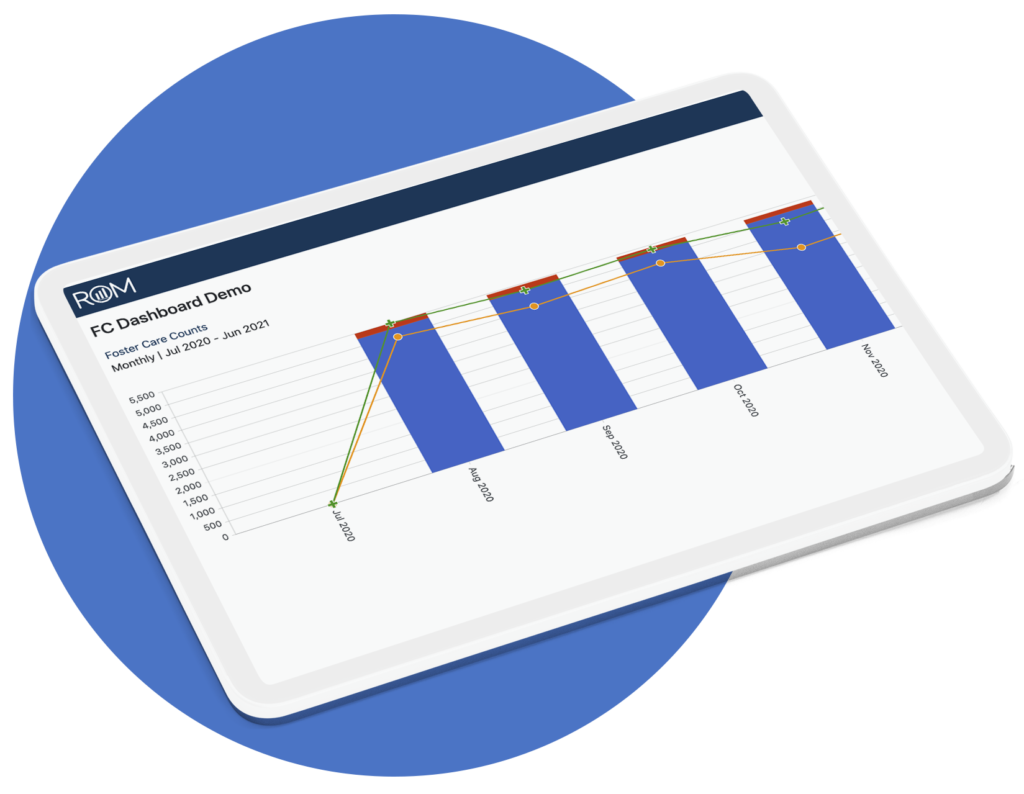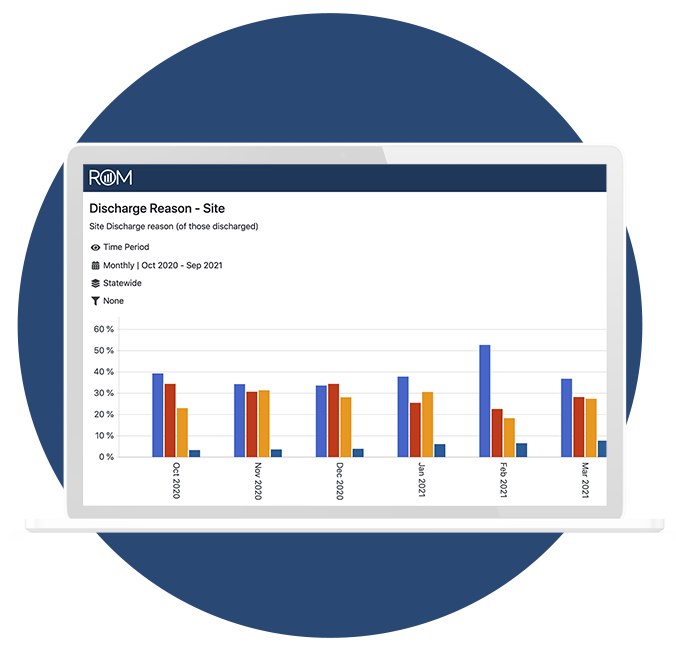Colorado Case Study
How Colorado Uses ROM to Manage & Streamline Data From 64 Jurisdictions
The Problem


The Solution
The Outcome
In 2021, there were almost 400 active users in the ROM secure site. Having ROM in place was instrumental for helping counties trust the data provided by the state. Additionally, the reporting and analytics provided by ROM technology has empowered a stronger county and state partnership.
The ROM system also enabled the public launch of a performance management system called C-Stat, made for tracking metrics across all 64 offices. Indicators like the time to permanency, lead time before counties act upon a report, child abuse or neglect referrals, and other accountability measures became publicly available for media and anyone interested in the data, reducing the amount of open records requests filed. In one year, the transparency site hosted 4,565 unique visits.
Colorado has made the most use of ROMs flexibility and tailor-made reporting functions, with 25 custom reports, the highest number of any of ROM’s partners. Counties are invested with the ROM system because it provides accessibility and reduces their burden. ROM, CDHS, and counties regularly hold workshops for troubleshooting and reporting best practices.
Because of ROM’s comprehensive, accurate, and reliable data, Colorado uses it for large analytic projects such as evaluating risk of re-entry and risk of aging out of the system. The validated longitudinal reporting data provided by ROM data has proven itself valuable for guiding and informing policy and best practices.
ROM Services Provided
- Customized Database
- API
- User Interface
- Networking & Sharing Best Practices
- Training & Consultation
- Testing & Staging Environment

